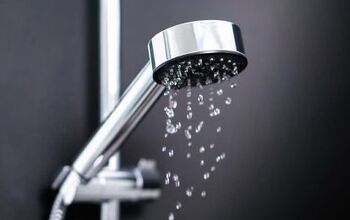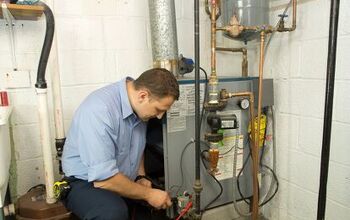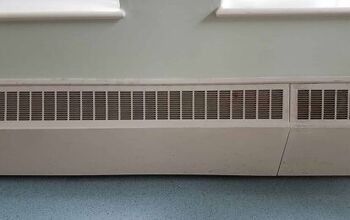Sprinkler Zone Won't Turn Off? (Here's How To Fix It)

If you own a sprinkler system, you’re already likely aware that it must be turned off during the winter. Leaving it on could potentially cause damage to the piping caused by freezing water. Shutting down the system will preserve and protect it for ideal performance next season.
However, what happens when you go to turn off the system and it doesn’t shut off? Or, if a particular zone continues running after the system has been turned off? This is a tell-tale sign that something is not operating properly.
The issue could be as basic as a scheduling error with your sprinkler controller, a dirty valve or as complex as a more severe, mechanical problem. Let’s examine all the possible reasons for why your sprinkler zone won’t turn off and how to fix it.
Related Content: How Many Sprinkler Heads Should You Have Per Zone? | Sprinklers Won’t Turn Off? | Parts Of A Sprinkler System | Does A Sprinkler System Add Value To Your Home?
Do You Need to Hire a Sprinkler System Contractor?
Get free, zero-commitment quotes from pro contractors near you.

Turning Off the Sprinkler System
The first step in troubleshooting why a sprinkler zone won’t shut off is turning off the system. You can do this in two different ways: switching to the “Off” button on the controller or turning off the shut-off valve. This will cancel any of the scheduled sprinkler times and kill the whole system so that you can inspect it safely.
Shutting Off Sprinkler System with The Controller
Depending on your individual sprinkler controller, your “Off” button may appear as “Rain Off,” or simply “Rain.” Activating the “Off” switch should be all that you need to do in order to shut down the system via the controller.
Do not disconnect the controller by unplugging it, this may disturb your routine watering schedule and may cause you to reprogram it. However, if you are turning the controller dial to the “Off” position and your sprinkler is still on, this is a deeper mechanical issue.
For further troubleshooting, you’ll need to turn off the system manually at the water source.
Video: Shutting A Sprinkler System That Won’t Shut Off
Shutting Off Sprinkler System Via Shut-Off Valve
You can find the shut-off valve at the source of water for your sprinkler system. By turning it off you’ll be effectively cutting the flow of water to only your sprinkler. This will not affect the rest of your home’s water supply.
Your backflow preventer can also be used as a point of shut off. You can locate your backflow device by searching for its green rectangle housing. In older models, the backflow preventer housing may be an oval shape. If you find the backflow preventer is leaking, follow these steps to fix it.
The device will most likely be located close to the water meter and near the road on your property. It also could be buried underneath new growth so brush long grass to the side when searching. Once you find your backflow preventer, you will need to turn it off. It will have one of the two following valves:
- Ball Valves: If your backflow preventer is newer, it will have ball shut-off valves. The ball valve will appear T-shaped and you will turn this handle clockwise to initiate shut off of the water. If this is the first time the handle has been moved, it may be difficult to turn and require additional tools.
- Gate Valves: The earlier backflow preventer models are constructed with gate valves. To cut off the flow of water, turn the faucet-like lever clockwise. If you’re experiencing any resistance when turning, use gloves to prevent damage to the device or injury to yourself in the case of corrosion.
Once your sprinkler system is shut off, you can continue the process of troubleshooting, identify the problem and attempt to fix it.
Troubleshooting a Sprinkler Zone That Won’t Turn Off
If you suspect that the issue may be a scheduling mistake or a problem with the timer, you’ll want to test this prior to turning off the water supply. Start by disconnecting one of the valve wires and if the valve shuts off, the reason why your sprinkler zone won’t turn off has to do with the timer.
If the valve does not shut off, continue troubleshooting using the steps below:
- Turn of the main water supply using one of the two steps above: shut-off valve or “off” switch on the controller.
- Expose the top of the valve and detach the diaphragm.
- Turn the water supply back on and flush out the valve for at least fifteen seconds.
- Examine the diaphragm for any rips, holes or other damage. If this is the case, replace the device.
- Remove the solenoid from the top of the valve and clean out the ports.
- Reassemble the valve and turn on the water supply.
For a more detailed explanation, check out this guide: Sprinkler Valve Won’t Shut Off?
Replacing an Irrigation Valve Diaphragm
If only one zone is malfunctioning in your sprinkler system, it’s likely caused by a valve in that particular zone. More specifically, it may be an issue with the zone control valve. Use an external bleed screw to dislodge any dirt or debris that may be stuck in the diaphragm of the valve.
If the problem continues, you will need to disassemble and clean out the valve by adhering to the manufacturer’s instructions. If the diaphragm is damaged, replace the device by following the below steps:
- Shut off the water supply following the steps outline above.
- Detach the valve bonnet from the rest of the valve body.
- Disconnect the valve bonnet assembly and diaphragm spring.
- Carefully wrench the diaphragm out from its seat in the system.
- Flush out the device using clean water.
- Press a new diaphragm into place.
- Reattach the diaphragm spring and valve bonnet.
- Tighten the screws or other materials holding the device together.
- Turn the water supply back on to check for leaks.
During this process, if you notice that any part of the bonnet or valve body is damaged, you should replace it immediately. Any sort of issues within the valve could be directly related to your sprinkler zone not turning off.
Debris in Valve
One of the most common reasons that a sprinkler zone won’t shut off has to do with debris stuck in the valve. This is especially the case if your sprinkler heads are located underground. The soil, rocks, and loose debris that surrounds the system could potential tamper with the solenoid.
When this occurs, the valve gets stuck open. This can keep the corresponding zone from turning off completely. More specifically, if debris has entered the valve, it can cause the diaphragm to remain open.
To correct this issue, you’ll want to clean out the valve. After turning off the main water supply, remove the solenoid by turning it counterclockwise and ensuring that the plunger moves freely and is clean. Then, unscrew the bonnet screws, remove the diaphragm and spring, and examine them. They should also be clean and free of any damage.
Wash the diaphragm with clean water and remove any debris. At this point, you’ll want to clear out any debris in the valve body and examine the seal seat for damage. Finish off by replacing all of the components and testing operation. If debris in the valve is a common issue for your sprinkler system, you may want to consider these alternatives.
Solenoid Problem Causing Sprinkler Zone to Not Shut Off
If the reason for the problem is not the timer or damage to the diaphragm, it may be related to the solenoid. The solenoid’s purpose is to serve as a manual control for opening the valve. In instances where the controller isn’t working, you can use the solenoid as a bypass.
Your sprinkler zone may not be shutting off because of an open or loose solenoid. If this is the case, twisting the solenoid clockwise can both tighten and close it. In more extreme circumstances, the solenoid may not be functioning properly and need replacing.
Thankfully, these devices are very easy to replace. Most solenoids can be swapped out by simply displacing the two wires and unscrewing the solenoid from the valve body. Take the new solenoid and screw it in place, connecting the wires.
If the valves are exposed to the elements, consider using grease caps on all wire nuts to make them weather resistant. To ensure that you’re replacing the solenoid with the correct kind, use the old one when shopping at your local home improvement store. Take a photo or bring it with you to identify a matching replacement part.
Do You Need to Hire a Sprinkler System Contractor?
Get free, zero-commitment quotes from pro contractors near you.

Relevant Questions
The first likely reason to consider is that it may be full of dirt or debris that needs to be flushed out. However, if a cleaning does not correct the issue, the solenoid has probably gone bad and necessitates replacing.
What does the solenoid in my sprinkler system do?Your sprinkler functions properly because the solenoid adjusts the water pressure inside the chamber and lifts the plunger, opening the sprinkler valve. If your solenoid has gone bad, it will be indicative of a valve failing to open because the water pressure in the sprinkler chamber has not changed.
How much does it cost to replace a sprinkler valve?If the reason for your sprinkler zone not shutting off has to do with an individual valve, you’re likely wondering how much it costs for a replacement. You can expect to pay anywhere between $12.50 to $40 per valve in addition to labor costs should you hire a professional plumber.
Related Guides To Help You Understand Your Sprinkler System Better

Jessica considers herself a home improvement and design enthusiast. She grew up surrounded by constant home improvement projects and owes most of what she knows to helping her dad renovate her childhood home. Being a Los Angeles resident, Jessica spends a lot of her time looking for her next DIY project and sharing her love for home design.
More by Jessica Stone



























